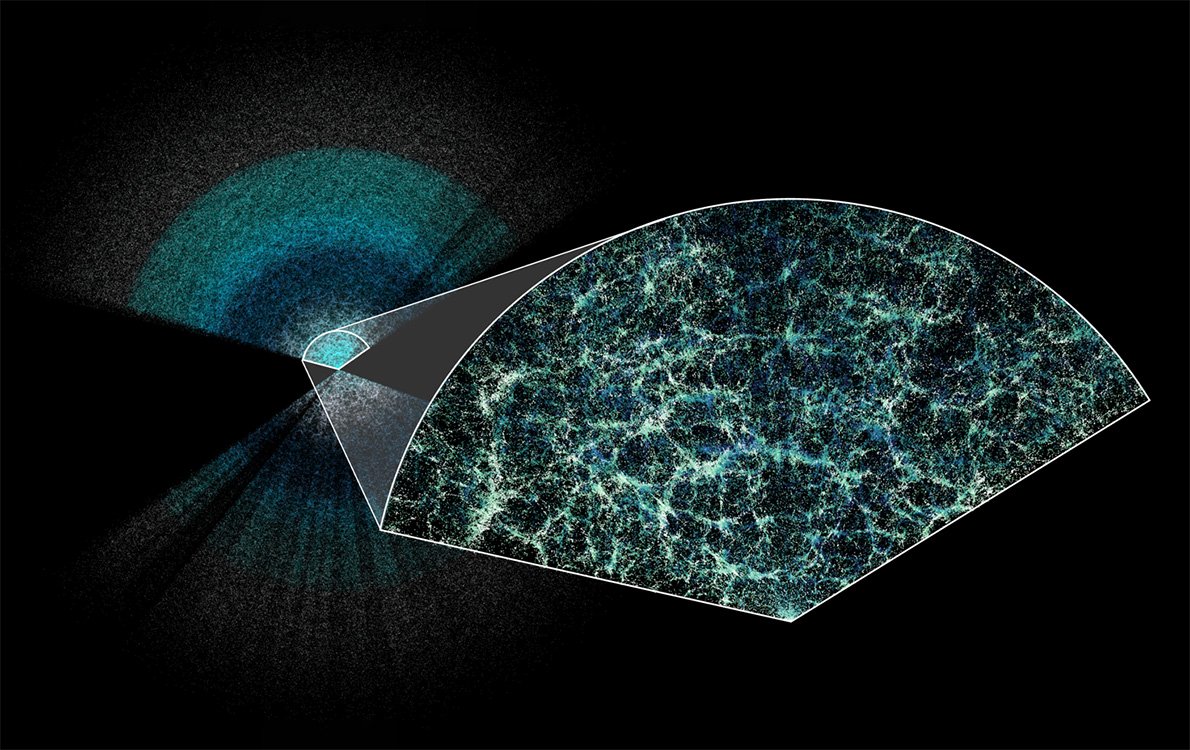In a groundbreaking revelation, a massive survey of the cosmos has unveiled new insights into one of the universe’s most enigmatic phenomena: dark energy.
In a groundbreaking revelation, a massive survey of the cosmos has unveiled new insights into one of the universe’s most enigmatic phenomena: dark energy. Contrary to conventional wisdom suggesting dark energy maintains a constant density throughout time, emerging data hint at its potential evolution alongside the cosmos.
Physicist Daniel Scolnic of Duke University, not affiliated with the study, describes the findings as “an adrenaline shot to the cosmology community,” underlining the profound impact of this discovery.
Dark energy, an elusive force propelling the universe’s accelerated expansion, remains a profound mystery despite constituting the majority of the cosmos. To delve into this enigma, the Dark Energy Spectroscopic Instrument (DESI) has generated the largest 3-D map of the universe to date. Detailed in 10 papers released on April 4 via the DESI website and presentations at the American Physical Society’s meeting in Sacramento, California, the research sheds light on the universe’s expansion history by scrutinizing galactic distributions.
While the data align with the conventional cosmological framework, they also entertain the possibility of dark energy’s equation of state varying over time. Such a revelation could revolutionize scientists’ understanding of the universe’s evolution.
Analyzing the project’s inaugural year of data, researchers mapped the positions of 6.4 million galaxies and quasars, the luminous cores of active galaxies. This comprehensive map enables the estimation of the universe’s expansion rate, leveraging baryon acoustic oscillations—density patterns established by primordial sound waves—as a cosmic ruler to measure expansion across different epochs.
By dividing the universe into seven temporal slices spanning up to 11 billion years, scientists traced its expansion trajectory. While recent epochs featured various galaxy types, earlier eras necessitated the study of distant quasars due to the faintness of galactic light. DESI’s data, when compared to the standard lambda Cold Dark Matter (lambda CDM) theory, initially exhibited a strong correlation.
However, a novel approach incorporating supernova studies hinted at a different narrative. By amalgamating DESI’s data with supernova observations, researchers found better agreement with an evolving dark energy scenario. Although not definitive, the significance of this deviation surpassed 3 sigma, representing a tantalizing prospect for further exploration.
According to DESI physicist Nathalie Palanque-Delabrouille of Lawrence Berkeley National Laboratory, forthcoming data from five years of observation, cataloging millions of galaxies and quasars, promises greater clarity. This initial breakthrough underscores DESI’s potential to redefine our understanding of dark energy and cosmology at large.
Astrophysicist Michael Wood-Vasey of the University of Pittsburgh acknowledges the study’s significance but remains cautious, emphasizing the need for prudence in interpreting potential deviations from the standard model.
Moreover, the findings have implications beyond cosmology. They could potentially challenge prevailing measurements of the Hubble constant, the universe’s current expansion rate, which have long been a subject of contention. Dillon Brout, a DESI collaborator from Boston University, suggests that departing from the lambda CDM model could significantly alter our understanding of the Hubble constant tension, presenting a new frontier for exploration in cosmological research.
As scientists delve deeper into the mysteries of dark energy, the cosmos continues to reveal its secrets, ushering in a new era of discovery and redefining our understanding of the universe.
